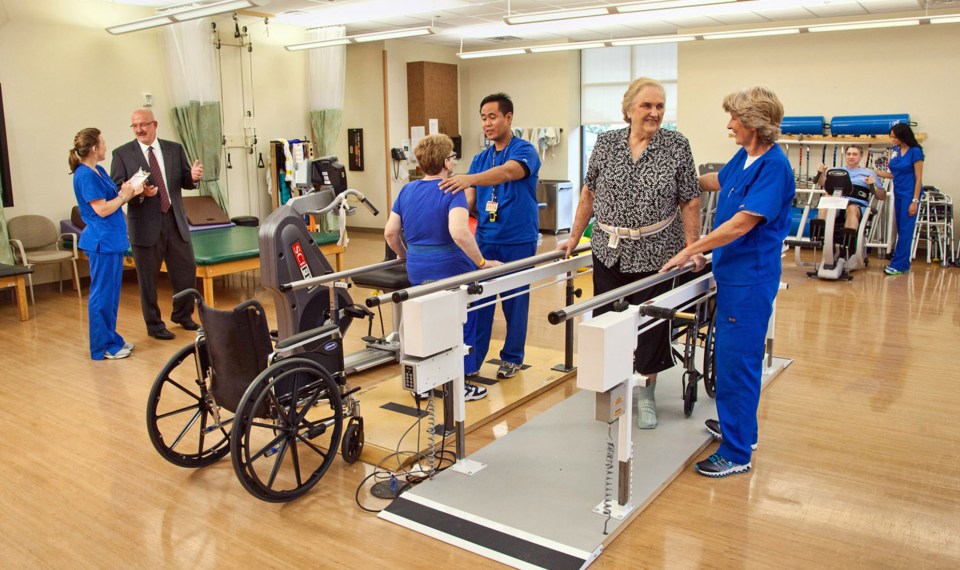Pelvic floor physical therapy provides specialized care to people of all ages and genders who are experiencing some sort of pelvic floor dysfunction.
The pelvic floor is a group of muscles located between the tailbone and the pubic bone that controls your ability to go to the bathroom.
Evaluation and treatments for pelvic floor physical therapy are individualized one-on-one sessions in private treatment rooms and focus on reducing pain and discomfort, as well as improving quality of life. In general, conditions that pelvic floor physical therapists treat can be due to the pelvic floor muscles being weak or tense. In some cases, the pelvic floor muscles are both.
Causes of Pelvic Floor Weaknesses
Diagnoses that are most often (but not always) attributed to pelvic floor weakness are:
- Bladder and/or bowel incontinence. This is the leaking of urine or bowel movements. There are different types of bladder and bowel incontinence. Urge incontinence is a large volume of leaking with the urge to go to the bathroom. Stress incontinence is a small amount of leaking with increased pressure on the bowel or bladder such as coughing, sneezing, laughing or physical exertion. There is also mixed incontinence, which is a combination of both stress and urge. Overflow incontinence is constant small losses where the quantity of bowel or urine exceeds the holding capacity. Functional incontinence is when a person is physically unable to get to the bathroom in time.
- Pelvic organ prolapse. This occurs when the pelvic floor muscles, tissues and pelvic ligaments weaken and stretch. This can result in the bladder, uterus and/or rectum dropping out of their normal positions.
- Post prostatectomy incontinence. This occurs after the prostate is removed, and the pelvic floor muscles are not strong enough to prevent leakage.
- Bladder and bowel urgency or frequency. This is having to rush to the bathroom or go to the bathroom more than normal.
Causes of Pelvic Floor Tightness
Diagnoses that lead to pelvic floor tightness and tension include:
- Constipation. This is when a person passes less than three bowel movements per week or has difficulty passing a full bowel movement.
- Interstitial cystitis. Also known as painful bladder syndrome, this is a pain condition that can often be mistaken for a urinary tract infection (UTI), but there is no infection. Symptoms include bladder and pelvic pain or pressure and a frequent urge to urinate.
- Dyspareunia. This is a painful penetration with intercourse and/or internal exam.
- Chronic prostatitis/chronic pelvic pain syndrome. This is ongoing or recurring pelvic pain and urinary tract symptoms with no evidence of infection.
- Bladder urgency or frequency. This can also be due to the pelvic floor muscles being too tense which can result in incomplete bladder emptying.
How to Strengthen Your Pelvic Floor
There are several techniques and exercises that can strengthen your pelvic floor. Some of them include:
Cueing for proper pelvic floor contraction. Don’t just squeeze. You want to pull the pelvic floor up and in. Imagine an elevator door closing and the entire floor lifting. You can also imagine stopping the urine flow or holding back gas.
Pelvic floor contractions: There are two types of pelvic floor contractions. The first contraction is called a slow hold where one will pull up and in and hold as long as they can until can hold to 10 seconds then relax for 10 seconds. Make sure you are fully relaxing the muscle between repetitions.
The second contraction is called quick flicks, where you quickly pull in and hold one to two seconds and let go for one to two seconds. Repeat up to 10 repetitions. Try to work up to 10 repetitions of each pelvic floor contractions two to three times a day. Then start doing the contractions of the pelvic floor with functional activities, such as cooking or getting ready.
What would Pelvic Floor Physical Therapy Look Like?
First, your physical therapist will take a thorough history and discuss your symptoms. The therapist will ask you multiple questions about your symptoms.
Based on your answers and history, an exam will be performed. This may include observation and movement of your back, pelvis, hips, abdomen and pelvic floor. The therapist may also perform an internal exam, but only with your permission. You may refuse an internal exam at any time and should discuss your concerns with your therapist.
After the exam and assessment is complete, your physical therapist will discuss the findings and explain the treatment. You will be educated on your condition and the anatomy of the pelvic area. The therapist will then discuss treatment, and, most likely, give you homework. You may only have to attend therapy in person one time a week to one time a month.
Pelvic floor physical therapy could include pelvic floor muscle training, stretching and strengthening, relaxation techniques, soft tissue mobilization, scar tissue mobilization, bladder and bowel retraining, avoiding bladder irritants, behavioral modifications, postural and body mechanics training, home exercises and self-treatment techniques.
If you or anyone you know is complaining of any of these symptoms related to the pelvid floor, talk to your physician and get in to see a pelvic floor therapist.
Louise Litzy is pelvic floor therapist at Geisinger Encompass Health Rehabilitation Hospital.
The content of this site is for informational purposes only and should not be taken as professional medical advice. Always seek the advice of your physician or other qualified healthcare provider with any questions you may have regarding any medical conditions or treatments.



